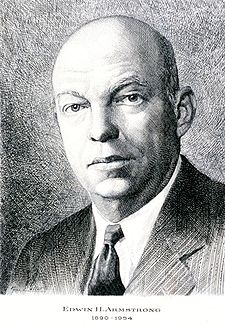The "Duplexer Gap" Issue Has Nothing to do With the Future of Local TV News!
National Association of Broadcasters, Radio & Television Digital News Association, Microsoft Corporation, Utilities Telecom Council, Wireless Internet Service Providers Association (WISPA), Engine Advocacy, Spectrum Bridge, Consumers Union, Consumer Federation of America, Open Technology Institute at New America, Public Knowledge, Free Press, Common Cause, Benton Foundation, Rural Broadband Policy Group, Institute for Local Self-Reliance, Access Humboldt, and Akaku Maui Community Media.
Kudos to those who were able to bring such a coalition together on any issue! We do not necessarily disagree with the bottom line of the letter with respect to preserving the duplex gap for unlicensed and wireless mic use, but we want to make clear:
Future of Local TV News Does Not Depend on Duplex Gap Spectrum!
The letter has several statements on this issue:
- “Placing television stations in the duplex gap …would significantly undercut the public interest benefits associated with the auction ..r by preventing both mobile news reporting and deployment of low-band unlicensed spectrum in the places where low-band spectrum is most needed to effectively provide these services.” p. 1
- “…eliminating reserved spectrum for wireless microphones could leave newsgathering operations without necessary spectrum to cover breaking news.” p. 1
- “…preserving critical news reporting” - p. 2
- “The proposal would hamper reporting of breaking news in the most populous cities.” - p. 2
The above statements only make sense with respect to using the wireless microphones that are presently owned by TV stations. TV stations sell for prices in the order of millions of dollars. The value of their wireless mic equipment inventory is a negligible fraction of their net worth. While it is true that alternative spectrum wireless mics are not available in the US today, the main reason is the basic truism:
Free spectrum is always cheaper than any new technology!
And the wireless mic spectrum referred to in the letter is FREE spectrum using outdated technology!
Today’s Wireless Mic Spectrum is Both a Technological and Policy Anachronism
Maj. Armstrong - Inventor of FM

The irony is that even with the duplex gap available, in major cities theatrical productions, concerts and major sporting events will be hard put to use traditional wireless mic technology because of the near or complete elimination of virtual channels.
Since 1995 commercial spectrum users, e.g. broadcasters, have generally been expected to pay for spectrum use. Note that the PTC-related rail accident in Philadelphia highlighted the fact that Congress ordered he railroad industry to implement spectrum-based PTC but told them to buy spectrum access for existing licensees. Why do broadcasters feel they are entitled permanently to free spectrum access for wireless mics?
Is there a technological option? Yes at least one and certainly many others. But FCC's focus at throwing more spectrum at the problem removes any incentive for private capital formation for more efficient technology. Qualcomm developed several years ago a technology called FlashLinq for peer-to-peer communications in cellular spectrum under the control of cellular carriers similar tpthat way they control femtocells. This technology would allow cellular carriers to sell access to inevitable "white space" in their service areas that can only be used for lower power short range communications. Why is the product dead or dormant? Neither wireless mic users nor cellular carriers want anything to do with it! Wireless mic users are addicted to free spectrum and obsolescent technologies. Cellular carriers are addicted to the "killer app" mentality where they don't want a new service or revenue stream unless it is huge. Cellular operators can't fathom that eliminating other spectrum using by converting them to customers rather than fellow spectrum lustors might actually help their long range goals.
Today's smartphones are basically 2 way communications systems capable of sending and receiving 100s of kilobits or more of data. While your standard iPhone offers neither broadcast quality audio not easy access for sending high speed data from an external source, it is not rocket science to modify the interface to permits external high quality microphones with analog/digital convertors to interface with such a smartphone so the on the screen newsperson gets his/her audio out that way, not via Part 74 spectrum.
Other technical option are possible, but who would develop them given the present wireless mic policy impasse at FCC?
The issue of spectrum for concerts and theater is more complex technically because of both high quality audio requirements and requirements for minimum delay (less than 10 ms.). But again this does not seem impossible if FCC stops throwing spectrum at users with outdated technology who don't want to pay for spectrum.
So there may be reasons for keeping the "duplex gap", but the future of local news isn't one of them.



![Validate my RSS feed [Valid RSS]](valid-rss-rogers.png)

